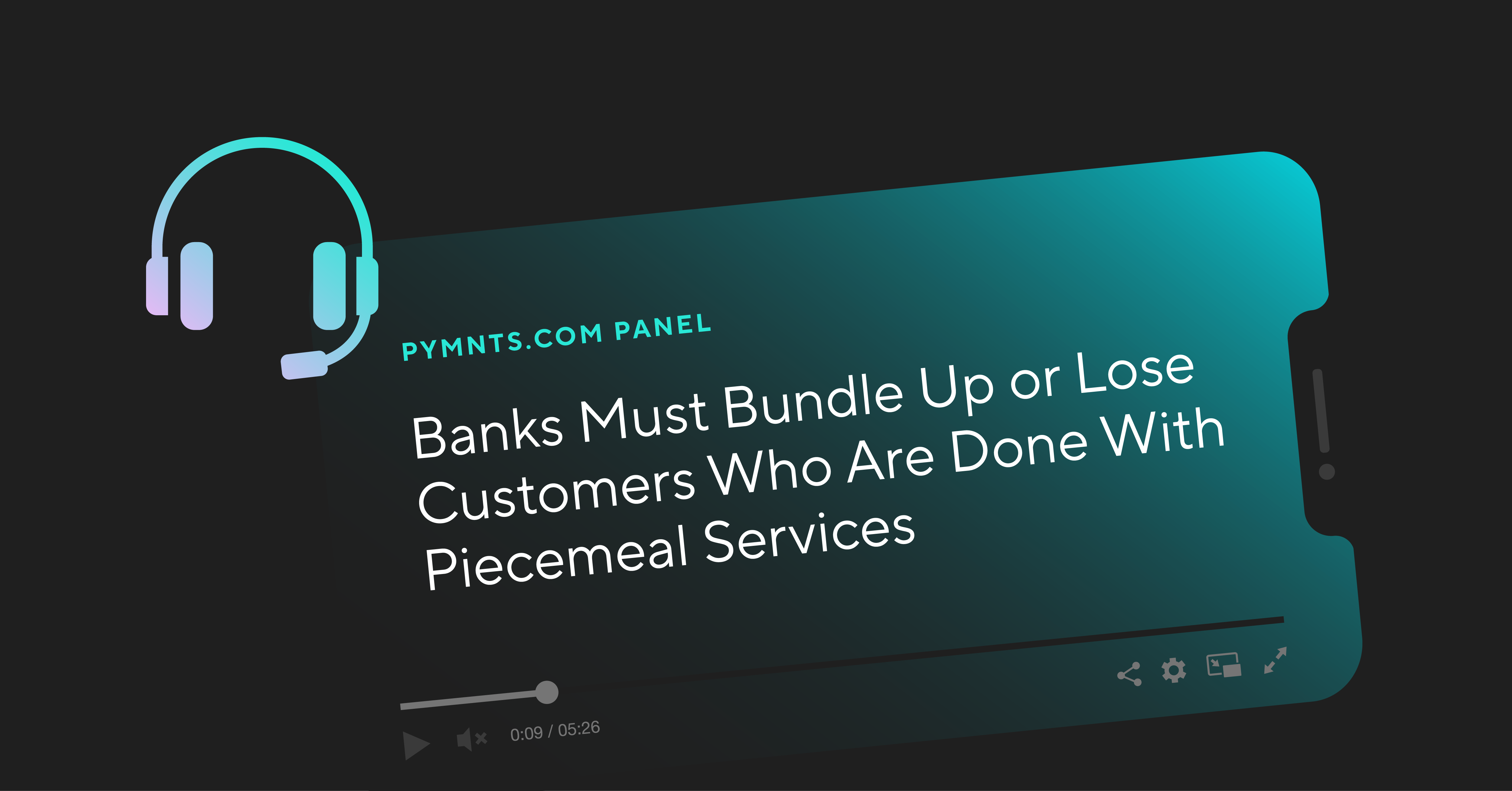
This video and article originally appeared on PYMNTS.com on August 15, 2022.
In banking, simplicity rules, and financial institutions (FIs) must simplify and consolidate what’s on offer to consumers — lest they lose nearly half of their customers.
Yvonne Stelpflug, SVP, Advisors Plus, PSCU, and Jonathan Gelfand, lending director at Amount, told PYMNTS’ Karen Webster that as consumers grapple with high levels of inflation while juggling the stresses of daily financial life, they’re looking for more from their FIs.
Increasingly, they want everything in one place — all their cards, all their accounts — accessible on-demand, in a format that is easy to navigate and easy to use. The overarching theme in these uncertain times? Convenience, personalization and some reassurance from providers that there are ways and means by which to navigate difficult situations.
It’s no easy undertaking. As Gelfand noted, especially with smaller banks, different products and services are tied to different workflows and back-end processes. The systems and the technology are disparate and the product design follows that technical implementation.
“This lead to customers feeling like they’re working with a number of different financial institutions,” he said.
The banks reach out with a range of offers via mail, e-mail and text, with offers of cards, mortgages and loans at the wrong time, with the wrong deals. As Gelfand remarked, when consumers keep receiving irrelevant messages, they tend to stop listening and looking for the relevant ones.
Digital channels have made it easy for consumers to move accounts between FIs, and to have checking accounts with one bank and cards with another. By way of example, PYMNTS’ data has found that although 44% of consumers use credit cards from their primary bank, 37% use credit cards from other card issuers.
To that end, PYMNTS’ research also shows that nearly 50% of consumers prefer to have all their accounts with one bank, and 71% said the convenience of bundling accounts at a single FI drives their preference for keeping everything in one place.
The warning signs are there for the companies that do not take heed: 42% of consumers said they would be at least “somewhat” likely to leave a bank that did not bundle its offerings.
Bundling Begins With Basics
But for the forward-thinking FI, said, Gelfand tying those disaggregated pieces into a coherent “story,” using data to bring valuable offerings together in one place, can give tailwind to revenue streams and cement customer loyalty.
“You can give people what they’re asking for,” he said, “which is to have their accounts together.”
To begin fashioning the bundle, start with payments — with the most basic functions of everyday financial life. Stelpflug noted that, especially for credit unions (CUs), there are specific products and services that are logical candidates for bundling and that resonate with customers.
“Bundling goes hand and glove with checking and debit cards,” Stelpflug said. “You never see those products unbundled.”
With those core payments choices in the mix, it’s a natural extension for banks to start layering in loans and other products that help clients manage their money. Bundling also provides opportunities for personalization and tailored services, Stelpflug said.
However, banks must be cautious about “threading the needle” between a one-size-fits-all approach that might be a pitfall of bundling and offering hyper-personalization. Gelfand said that banks can have the right tools in place to make consumers feel like they are enjoying “one relationship.”
That relationship can be forged right at the point of initial contact, when the customer is inputting data online to set up an account. There’s an opportunity, if the consumer has a DDA and debit card without a checking account or credit card, for the bank to state: If you take your payment for your credit card out of your DDA, there’s a benefit (say, with rewards points), as opposed to simply having that card with another institution.
Getting there requires that the FI break down the silos that exist between departments, to synthesize the infrastructure that has given rise to isolated products from a range of different partners.
“If you don’t tie them together,” said Gelfand, “you create far-flung pieces.”
Data is the glue that binds these disparate pieces together, but partnerships are critical too, said Gelfand, noting that for smaller FIs, it’s difficult to have all these skills in-house. By linking up with providers (Amount among them), regional banks and CUs can ensure they have the right origination and account management solutions in place.
Stelpflug added that CUs and smaller firms can “phase in” to bundled banking, introducing new and relevant offers that can reduce interest rates on cards or boost rewards points.
Financial Wellness, Too
There’s value to be gained over the longer term, too, as bundled banking gains ground. With the data and partnerships in place, connected seamlessly through application programming interfaces (APIs), Stelpflug said FIs can gain insight into how consumers are using their balances and how they are coping with the daily stresses of financial life.
Stelpflug also noted that FIs must strive to educate their consumers about their card programs, including why they are different and why they hold competitive advantages against other cards.
Looking ahead, Stelpflug said that the great digital shift has given FIs a chance to inject a bit of gamification into financial services, to leverage online channels — even social media — to enhance and increase the interactions with their customers.
As many as 44% of consumers would be open to getting recommendations from their banks about how to manage payments and accounts, which offers another avenue through which to cement loyalty.
For the banks, said Gelfand, “There’s upside and value in helping people spend better, and more wisely, and teaching them how they can use their cards — helping them come up a learning curve with insights. That’s where you can create the strongest forms of loyalty.”

To learn more about the opportunities embedded finance opens up for SMB lenders, watch Amount Chief Commercial Officer Sam Graziano's latest interview with PYMNTS.com
 Watch Interview
Watch Interview